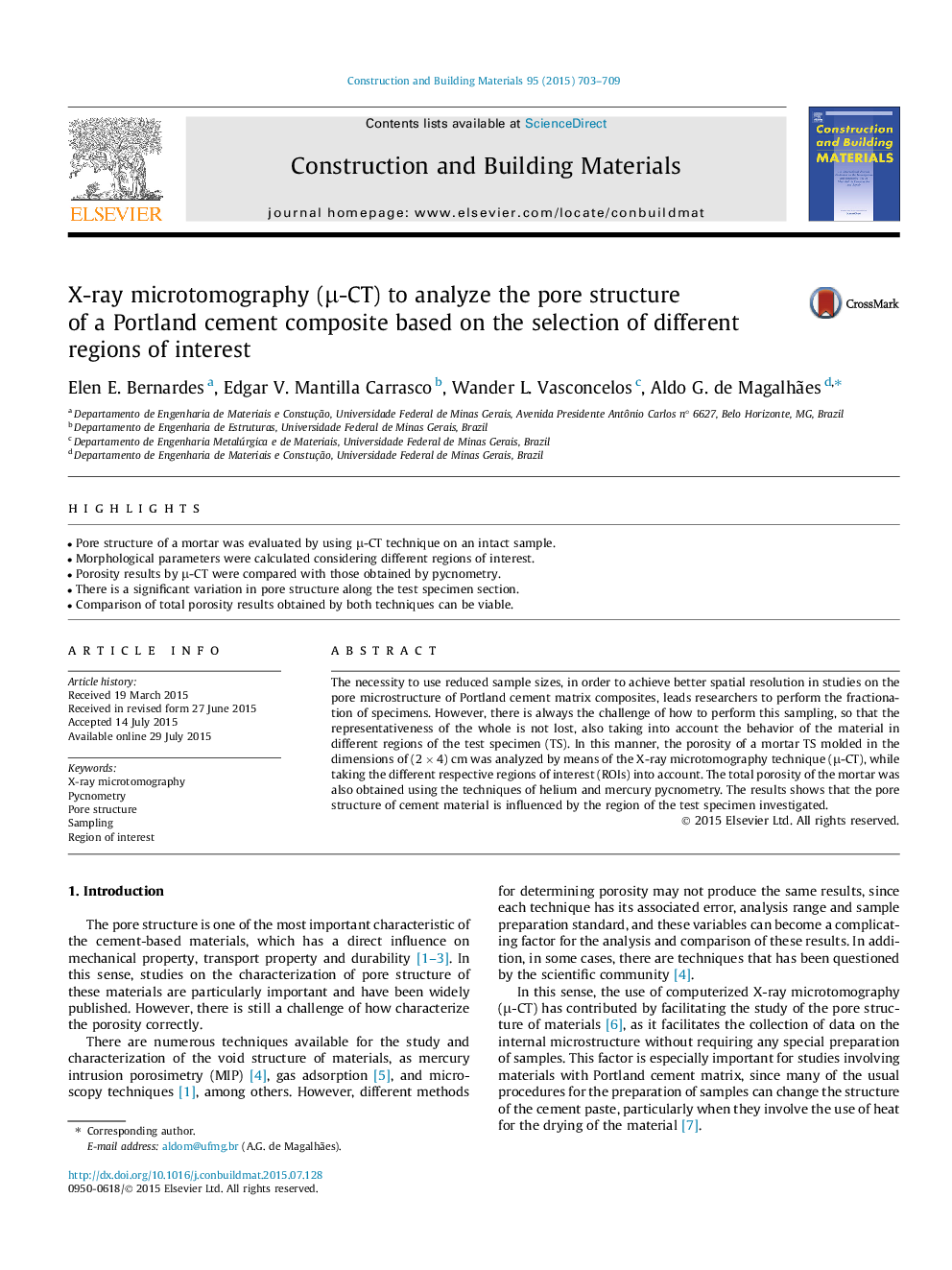| Article ID | Journal | Published Year | Pages | File Type |
|---|---|---|---|---|
| 256823 | Construction and Building Materials | 2015 | 7 Pages |
•Pore structure of a mortar was evaluated by using μ-CT technique on an intact sample.•Morphological parameters were calculated considering different regions of interest.•Porosity results by μ-CT were compared with those obtained by pycnometry.•There is a significant variation in pore structure along the test specimen section.•Comparison of total porosity results obtained by both techniques can be viable.
The necessity to use reduced sample sizes, in order to achieve better spatial resolution in studies on the pore microstructure of Portland cement matrix composites, leads researchers to perform the fractionation of specimens. However, there is always the challenge of how to perform this sampling, so that the representativeness of the whole is not lost, also taking into account the behavior of the material in different regions of the test specimen (TS). In this manner, the porosity of a mortar TS molded in the dimensions of (2 × 4) cm was analyzed by means of the X-ray microtomography technique (μ-CT), while taking the different respective regions of interest (ROIs) into account. The total porosity of the mortar was also obtained using the techniques of helium and mercury pycnometry. The results shows that the pore structure of cement material is influenced by the region of the test specimen investigated.
